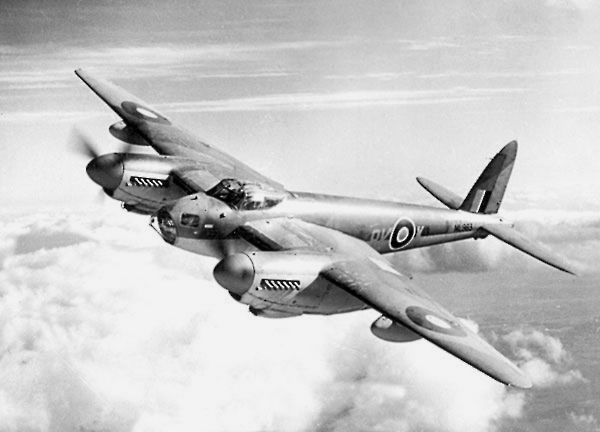
 |
|
#751
|
|||
|
|||
|
I would like to ask a question about new g loading limits in 4.10: All fighters with no bombs, no rockets and no fuel tank ll have the same structural g loading in service limits, i mean 8G? Or this structural limit ll vary from aircraft to aircraft based on its project? For example, russian and japanese fighters wooden builded ll have minor structural in service limits?
There ll be some kind of reference where i ll known about my aircraft limits? Thank you! |
|
#752
|
|||
|
|||
|
Quote:
In any case, aircraft are designed to known G limits, and I know of no evidence that these G limits were typically different for wooden aircraft than for metal ones of a similar type. Ideally, TD should probably work with the known G limits for a type, but this may not always be available. Where they aren't, suggesting that 'it's wooden, so it must be weaker' is based on a dubious premise at best. |
|
#753
|
|||
|
|||
|
Quote:
__________________
CPU i7-4770/MB MSI Z87-G45/RAM DDR3 8Gb Patriot Black Mamba 2133MHz/Video MSI GeForce GTX580 Twin Froz II/SSD Corsair Force 3 240Gb /Audio Creative SB-XFi/ Monitor EIZO Nano FlexScan EV2736W 2560x1440/ Saitek X52 Pro & Pro Flight Rudder pedals Last edited by Adwark; 04-29-2010 at 09:31 AM. Reason: Sorry, some erratum |
|
#754
|
||||
|
||||
|
Quote:
|
|
#755
|
|||
|
|||
|
Quote:
If aluminium plates deforms due to excessive forms it returns to its natural position in most times or smashes. Wood not, it brokes. Last edited by Ernst; 04-29-2010 at 04:04 AM. |
|
#756
|
|||
|
|||
|
If aluminium is not better, what was the advantage to use expensive aluminium plates instead wood? Was better to build wooden aircraft if aluminium was not expensive?
They used wood cause aluminium was expensive or not available in quantity in some countries. |
|
#757
|
|||
|
|||
|
Simply referring to 'wood' or 'metal' is almost meaningless. Aircraft are bulit out of specified materials, not vague descriptions. Which would work better, a longbow built out of yew, or one made out of cast iron?
Quote:
I suggest you do a little research into structual engineering in general, and aircraft design in particular, before you make any more sweeping statements of the relative benefits of wood vs metal construction. 
|
|
#758
|
|||
|
|||
|
Ok mr. knowns all, may it is better to build in wood. Aluminium has no advantage and is expesinve...
 and mosquisto was not made for hard manouvering or high gs, but for speed. and mosquisto was not made for hard manouvering or high gs, but for speed. It is certain that wooden construction is lighter, and allows more acelleration. But linear acellaration or level speed has nothing with structural resistance. Post this photo is the same to say, in actual context, that mosquito wooden construction allowed it hard manouvering. May you ll post a Zero photo. Yes Zero wooden construction allowed it good manouvering, but only at lower speeds, this mean less gs. All question is about gs. Yes i ll study more about structural resistance, and you? There is a great chance that both are wrong. Hehe... And i asked to TEAM Daidalos guys not you, they are studying to model the planes. If they say that i am completely wrong i accept. Last edited by Ernst; 04-29-2010 at 04:25 AM. |
|
#759
|
|||
|
|||
|
I'm not saying that 'metal' or 'wood' are better, I'm saying that you need to be specific about the materials you are talking about before you can make comparisons. You also need to undertand that aircraft are designed to withstand known loads, not thrown together with whatever material is available. I'm sure TD know this, and don't need vague generalisations to decide on structural strength modelling and G limits.
Do you have any evidence that the DH Mosquito was designed to lower G-loading standards than similar metal-construction aircraft? If you do, I'd like to see it. |
|
#760
|
|||
|
|||
|
If you double click on the 2nd video it will take you to the videos. I only posted a link to the 1 of 5 Last edited by nearmiss; 04-29-2010 at 04:57 AM. |
 |
|
|